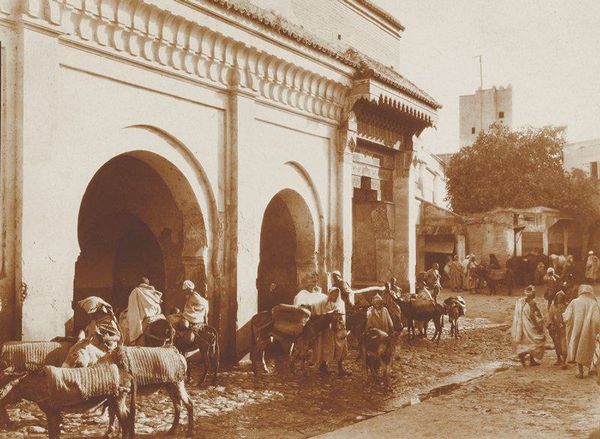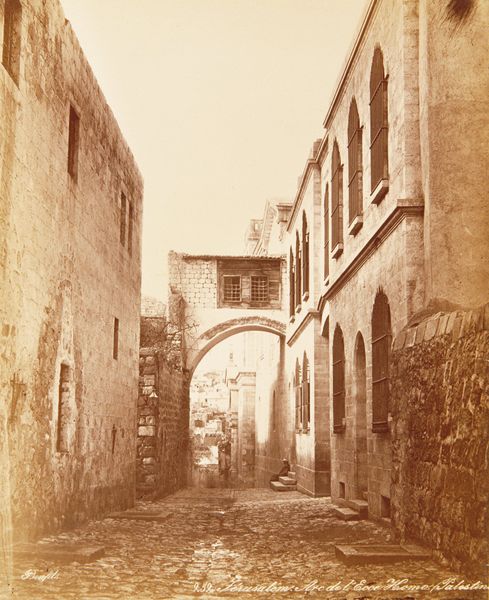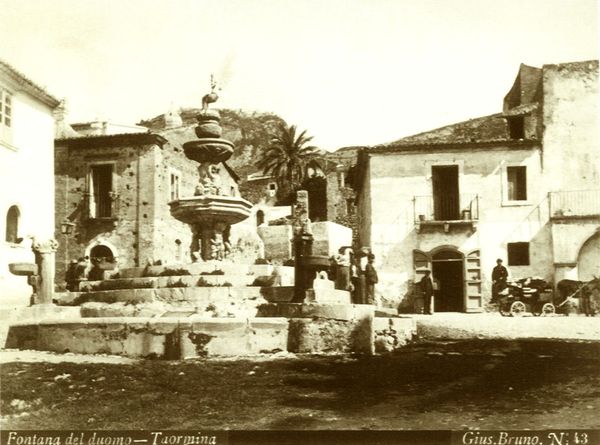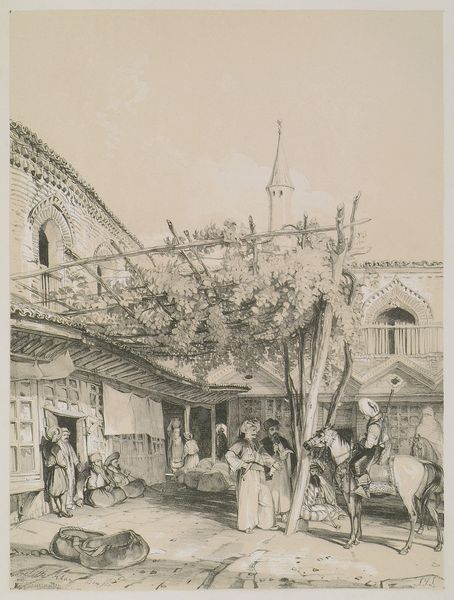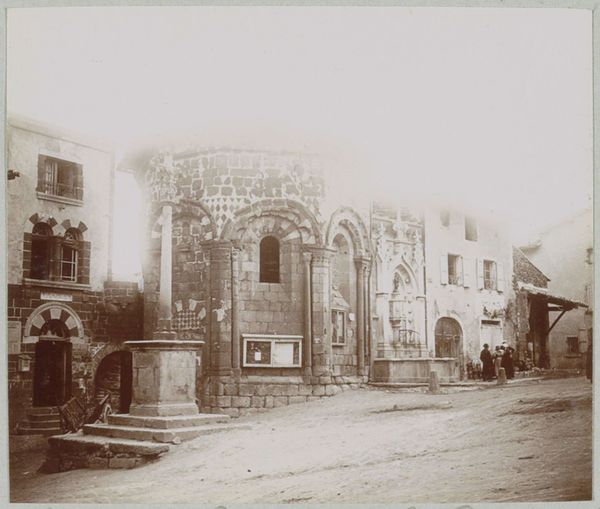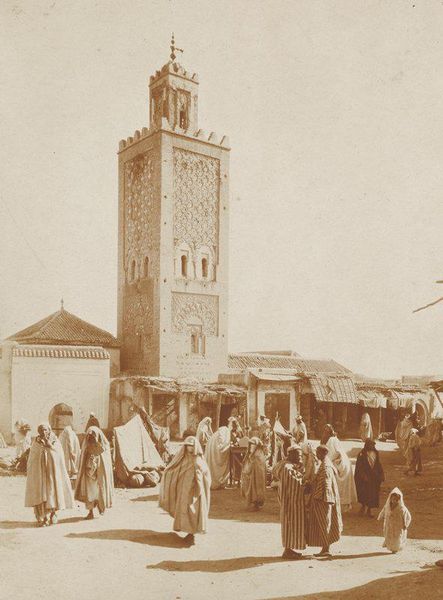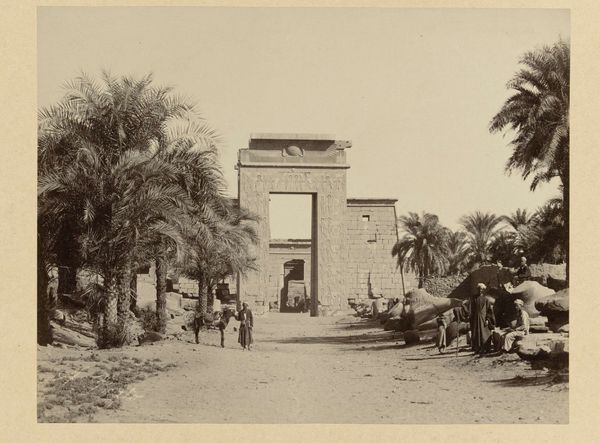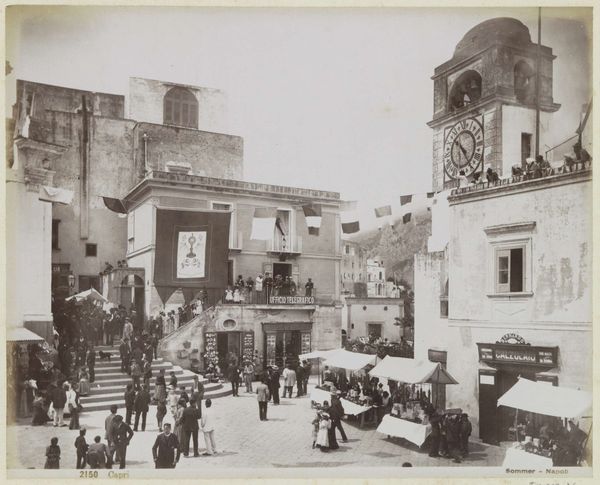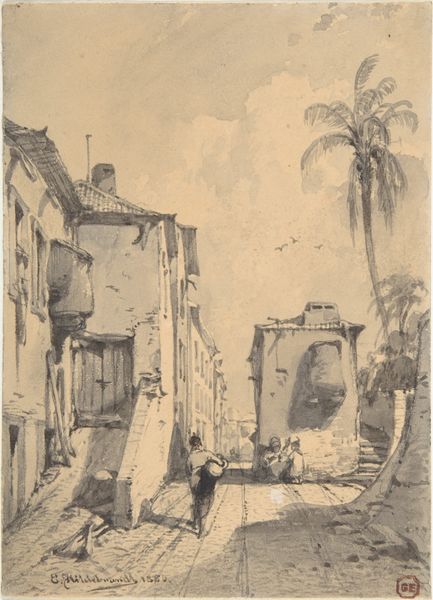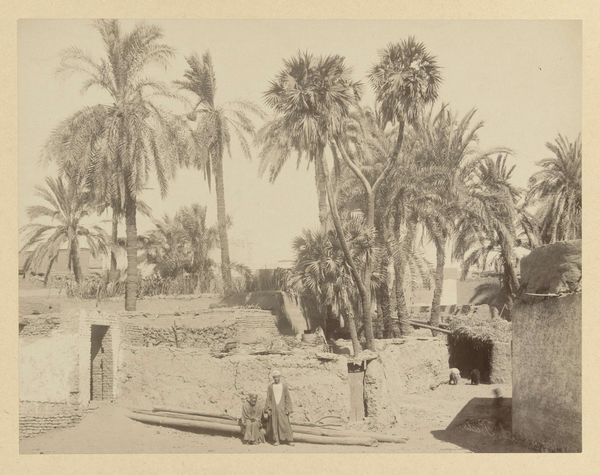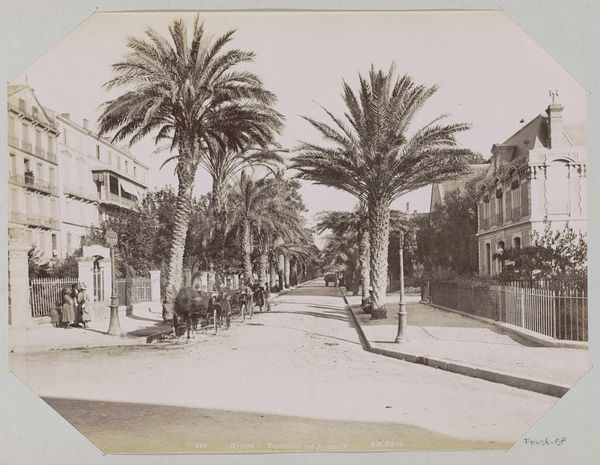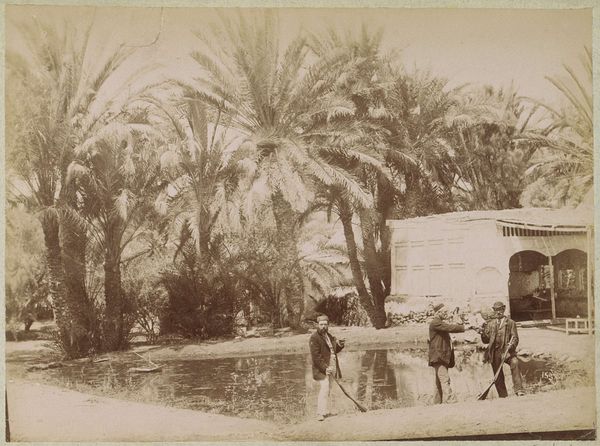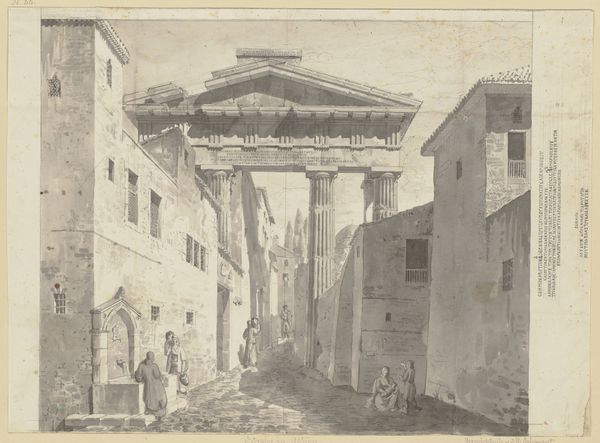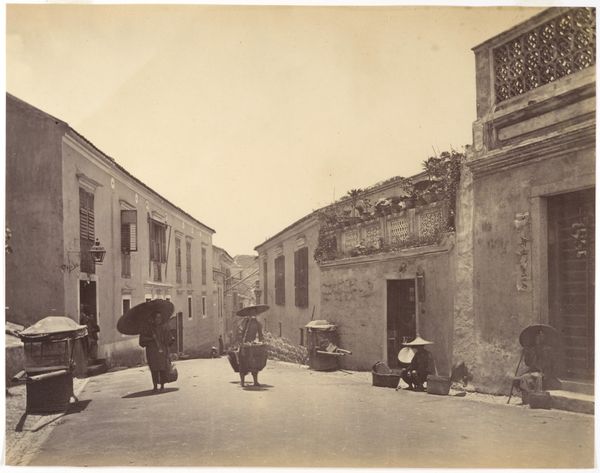
gelatin-silver-print
#
architectural sketch
#
amateur sketch
#
gelatin-silver-print
#
toned paper
#
light pencil work
#
quirky sketch
#
pencil sketch
#
incomplete sketchy
#
etching
#
france
#
architecture drawing
#
watercolor
Dimensions: 9 1/16 x 6 3/4 in. (23.02 x 17.15 cm) (image)9 3/8 x 7 1/16 in. (23.81 x 17.94 cm) (sheet)
Copyright: No Copyright - United States
Curator: Here we have an untitled photograph from approximately the 20th century, believed to be from France and part of the Minneapolis Institute of Art's collection. It’s a gelatin-silver print, showcasing a North African street scene. Editor: Immediately, I'm struck by the monochromatic tone, that deep sepia. It creates an incredibly immersive and somewhat dreamlike effect, softening the harshness one might expect from such a scene. Curator: That sepia tone is characteristic of gelatin-silver prints, which had a tremendous impact on visualizing colonial narratives. These images served as primary documents, shaping European perceptions of "the Orient". Consider how such framing impacts our reading of this place and its people. Editor: It undeniably evokes a sense of distance, doesn’t it? There is something to unpack in the way light and shadow define forms here, creating a strong sense of depth. Note how the receding planes lead the eye through the alleyway. Curator: Absolutely. And if we examine the subjects themselves, their placement—often on the peripheries or at a remove—further complicates our understanding. Their voices and stories risk becoming secondary to the visual spectacle. The photographer isn’t merely capturing; they are constructing a power dynamic. Editor: Yes, the architecture itself contributes. The arched framework above the path segments the scene, adding a layer of visual complexity. This division emphasizes the formal geometry within a seemingly "natural" environment, but could be reflecting an internal framework or viewpoint from the photographer. Curator: Right. Think about how those archways subtly imply ownership, or control. This links to France’s broader colonial project. These photographs can be seen as both evidence and instruments of cultural appropriation, where the artistic process is interwoven with political motivations. The architecture becomes a stage for exhibiting colonial authority. Editor: Indeed. Viewing the image through that lens shifts it entirely. Originally I was drawn to the formal elements and now appreciate its historical narrative too. Curator: It's these layered interpretations, blending aesthetics with critical context, that unlock deeper meanings. Editor: Precisely. This photo serves as a strong reminder of how inseparable art is from culture and societal forces.
Comments
No comments
Be the first to comment and join the conversation on the ultimate creative platform.
